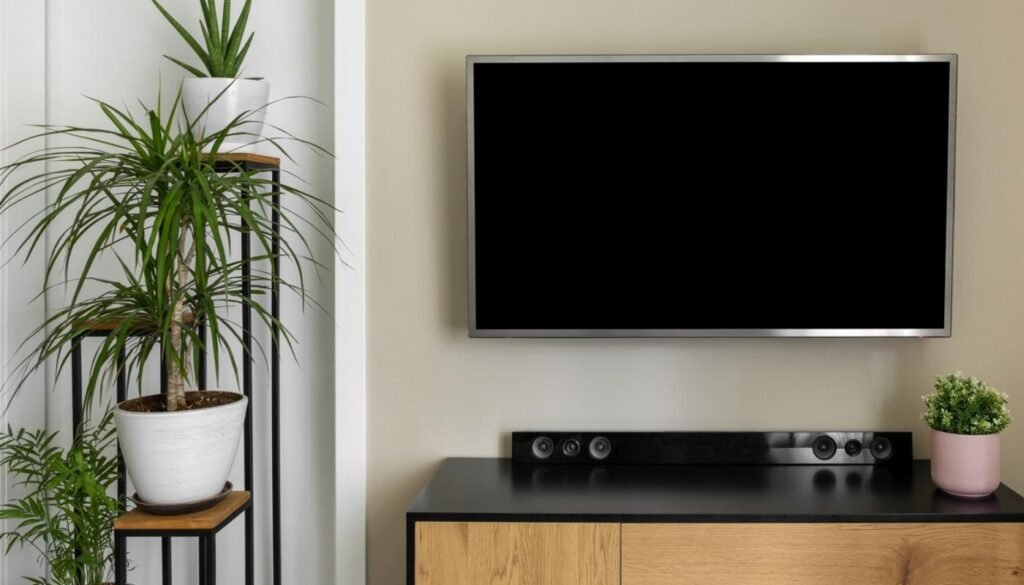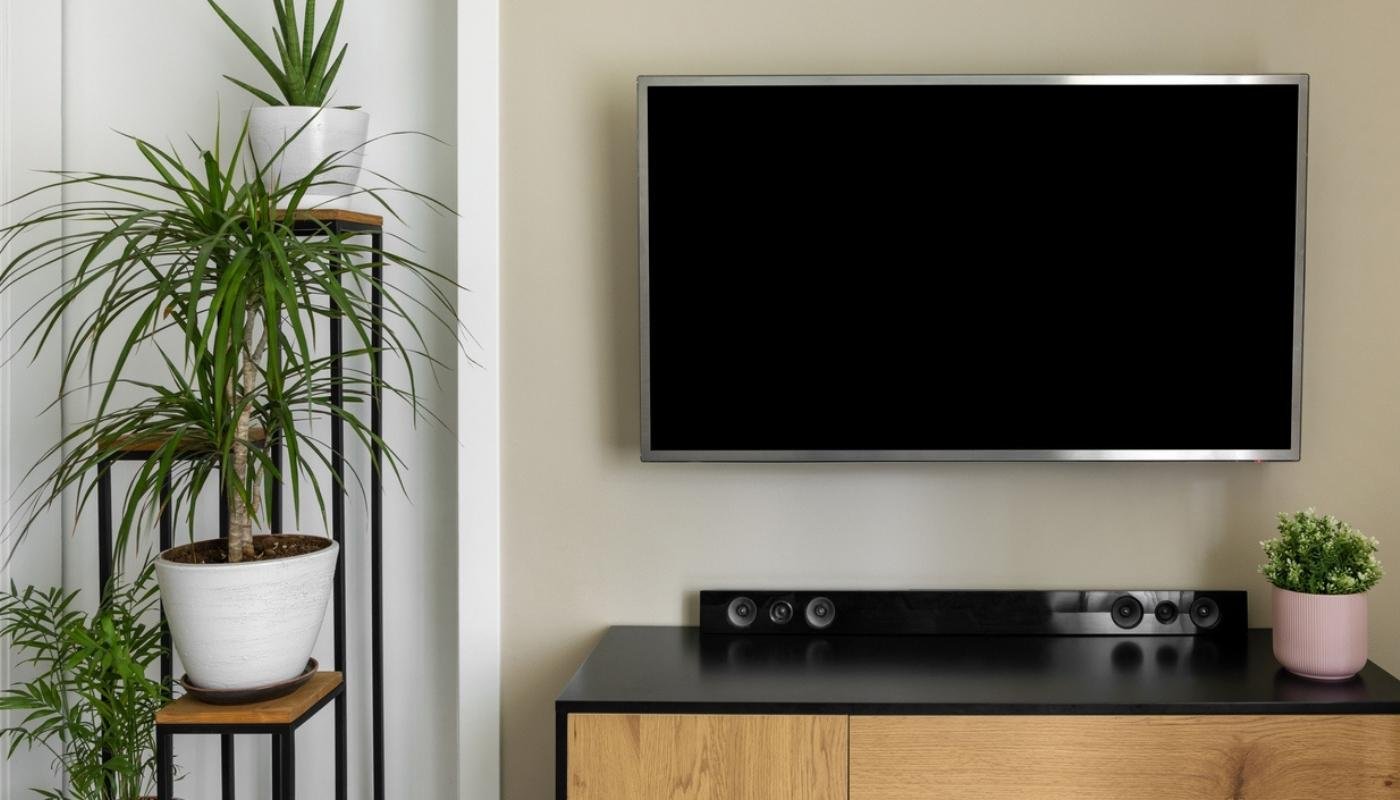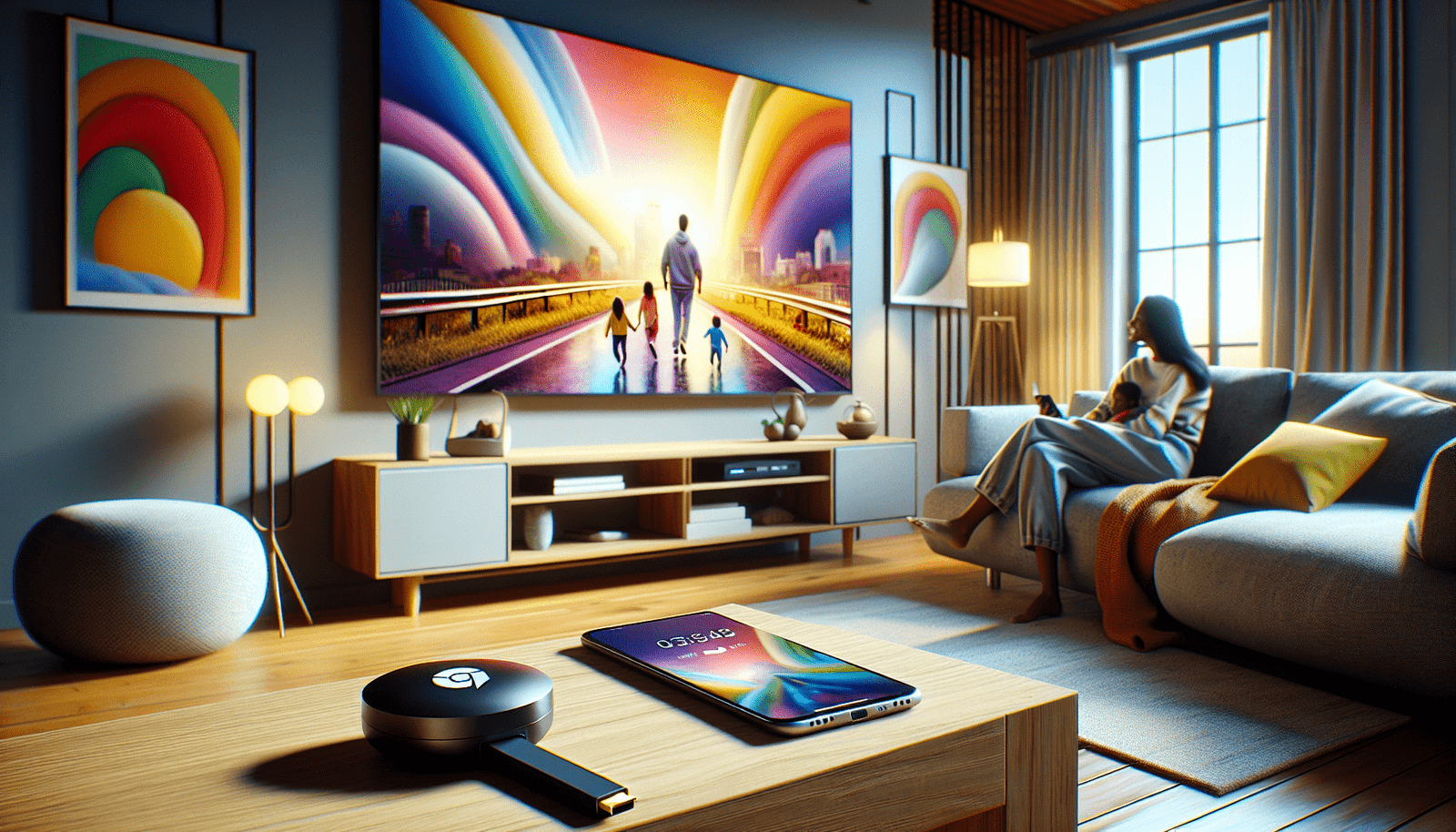Imagine you’re sitting in your living room, ready to watch your favorite movie. You want to immerse yourself in the cinematic experience, but your TV’s built-in speakers just aren’t cutting it. That’s where a soundbar comes in. In this ultimate guide, we’ll walk you through everything you need to know about choosing the perfect soundbar or headphones to elevate your audio game. From understanding different audio configurations to considering connectivity options, we’ve got you covered. Get ready to transform your home entertainment setup and take your movie nights to the next level.
Understanding Soundbars
What is a soundbar?
A soundbar is a compact audio device that is commonly used to enhance the sound quality of a television. It is a long, slender speaker enclosure that contains multiple speakers and is designed to be placed either above or below the TV. Soundbars are a popular alternative to traditional surround sound systems, as they provide improved audio performance without the need for multiple speakers and complex wiring.
Advantages of using a soundbar
Soundbars offer several advantages over built-in TV speakers and full surround sound systems. Firstly, they provide a significant improvement in audio quality, enhancing the clarity and depth of sound. This is especially noticeable when watching movies or listening to music with dynamic audio tracks. Additionally, soundbars are much more compact and easier to install compared to surround sound systems, making them a great option for those with limited space. They also eliminate the need for excessive wiring and speaker placement, resulting in a cleaner and more minimalist aesthetic.
Different types of soundbars
There are various types of soundbars available on the market, each tailored to different audio needs. The most common types include:
-
Traditional soundbars: These are the standard soundbars that come in a long, rectangular shape with multiple built-in speakers. They are suitable for most audio setups and provide good sound quality.
-
Gaming soundbars: Designed specifically for gamers, these soundbars often come with special features like virtual surround sound and customizable sound profiles. They provide an immersive gaming experience with enhanced audio effects.
-
Multi-room soundbars: These soundbars are part of a larger audio system that allows for wireless audio streaming and synchronization across multiple rooms. They are ideal for those who want to create a whole-home audio setup.
-
Under TV soundbases: Similar to traditional soundbars, these devices are designed to sit directly underneath the TV. They typically have a wider and flatter form factor, providing a stable base for the TV while delivering improved sound quality.
Soundbar Specifications
Audio channels
One of the key specifications to consider when choosing a soundbar is its audio channels. Soundbars usually come in 2.0, 2.1, 3.1, or 5.1 channel configurations. The first digit represents the number of main speakers, and the second digit indicates the presence of a dedicated subwoofer. For example, a 2.1 soundbar has two main speakers and a separate subwoofer for low-frequency sounds. The higher the number of channels, the more immersive and realistic the audio experience will be.
Wattage
Soundbar wattage refers to the power output of the device and directly impacts its volume and audio quality. Higher wattage soundbars can produce louder and more dynamic sound, making them suitable for larger rooms or spaces with high ambient noise. However, it’s important to note that wattage alone may not solely determine the quality of sound, as other factors such as speaker configuration and tuning also play a role.
Frequency response
The frequency response of a soundbar describes the range of audio frequencies it can reproduce. It is typically measured in Hertz (Hz). A wider frequency response means that the soundbar can accurately reproduce both low and high frequencies, resulting in a more balanced and detailed sound. Look for a soundbar with a frequency response that covers at least 20 Hz to 20,000 Hz, as this range captures the full spectrum of human hearing.
Connectivity options
When choosing a soundbar, it’s important to consider the available connectivity options. The most common connectivity options include HDMI, optical audio, and Bluetooth. HDMI offers the best audio quality and allows for seamless integration with other HDMI-enabled devices. Optical audio is another popular option and provides a reliable connection for digital audio. Bluetooth connectivity allows you to wirelessly stream audio from compatible devices such as smartphones and tablets. Additionally, some soundbars may also feature Wi-Fi connectivity and support for streaming services like Spotify and Apple Music.

This image is property of www.worldwidestereo.com.
Choosing the Right Size
Determining the size of the room
To choose the right size soundbar, it’s crucial to consider the dimensions of the room where it will be used. Larger rooms with high ceilings may require a soundbar with more power and larger drivers to fill the space with sound adequately. On the other hand, smaller rooms can benefit from compact soundbars, as they provide adequate sound coverage without overwhelming the space.
Consider the TV size
Another factor to consider when selecting a soundbar is the size of your TV. Ideally, the soundbar should be roughly the same width as your TV or slightly smaller. This ensures a visually balanced setup and prevents the soundbar from overpowering the TV’s appearance. Additionally, if your TV is wall-mounted, make sure the soundbar’s design allows for easy mounting or placement below the TV.
Placement options for soundbars
Soundbars can be placed in various positions depending on the available space and personal preferences. The most common placement options include:
-
Below the TV: Placing the soundbar below the TV is a popular choice, as it aligns the sound with the on-screen action and allows for easier cable management. This placement is suitable for both freestanding and wall-mounted TVs.
-
Above the TV: If you have limited space below your TV or prefer a higher sound projection, you can mount the soundbar above the TV. This placement can create a more immersive audio experience, especially for soundbars with upward-firing speakers.
-
Wall-mounting: Some soundbars come with brackets or mounting holes for wall installation. This placement option is ideal for saving space and achieving a sleek, minimalist look. However, ensure that the desired location provides optimal sound dispersion and does not obstruct the TV’s infrared receiver.
-
In front of the TV stand: For soundbars without wall-mounting capabilities, placing it in front of the TV stand or media console is a practical option. This setup ensures easy access to the soundbar’s controls and connections while maintaining a clean and clutter-free look.
Audio Quality
Understanding sound formats
When it comes to soundbars, it’s essential to consider the supported audio formats. Common sound formats include Dolby Digital, Dolby Atmos, DTS:X, and PCM. Dolby Digital is widely supported and provides 5.1 channel surround sound, while Dolby Atmos and DTS:X offer a more immersive audio experience by incorporating height channels for overhead sound effects. PCM is an uncompressed audio format often used for music playback. Ensure that the soundbar supports the formats you intend to use for optimal audio performance.
Dolby Atmos and other advanced technologies
Dolby Atmos is a cutting-edge audio technology that creates a three-dimensional soundscape by incorporating height channels and object-based audio. Soundbars with Dolby Atmos support use upward-firing speakers or reflect sound off the ceiling to deliver a more immersive audio experience. While Dolby Atmos-enabled soundbars offer superior audio immersion, they may require additional speakers or positioning considerations to fully utilize the technology.
Speaker configuration
Soundbars come in different speaker configurations, ranging from 2.0 to 9.1.4. The numbers indicate the number of main speakers, dedicated subwoofers, and additional surround or height channels. A higher number of speakers generally results in more realistic and immersive audio. However, keep in mind that the physical size and layout of your room should be considered to ensure optimal speaker placement and sound dispersion.

This image is property of d12mivgeuoigbq.cloudfront.net.
Wireless vs Wired
Advantages and disadvantages of wireless soundbars
Wireless soundbars offer the convenience of cable-free installation and flexibility in placement. With wireless connectivity options such as Wi-Fi and Bluetooth, you can easily connect and stream audio from your mobile devices or home network. This eliminates the need for unsightly cables and allows for easy repositioning of the soundbar. However, wireless soundbars may be susceptible to interference and may require occasional troubleshooting to maintain a stable connection.
Pros and cons of wired soundbars
Wired soundbars, on the other hand, offer a stable and reliable audio connection without the risk of interference. They are typically connected to the TV or audio source via cables like HDMI or optical audio, ensuring a consistent audio signal. However, the cables can be cumbersome and may require careful routing and management to maintain a clean and organized setup. Additionally, wired soundbars may have limited positioning options due to the physical connections.
Which one is suitable for your needs
The choice between wireless and wired soundbars ultimately depends on your personal preferences and audio setup. If you value convenience and easy setup, a wireless soundbar may be the best option. On the other hand, if you prioritize stability and reliability, a wired soundbar may be more suitable. Consider factors such as the layout of your room, the presence of other wireless devices, and your willingness to troubleshoot connectivity issues before making a decision.
Additional Features
Built-in subwoofer
Many soundbars come with a built-in subwoofer, which enhances the low-frequency sounds for a richer and more impactful audio experience. Built-in subwoofers eliminate the need for separate subwoofer units and wiring, making them a convenient option for those who want powerful bass without the extra clutter. However, it’s important to note that the performance of built-in subwoofers may not match that of dedicated external subwoofers, especially in larger rooms or for those who desire deep, room-shaking bass.
Voice assistants
Some soundbars feature built-in voice assistants, such as Amazon Alexa or Google Assistant. These voice assistants allow you to control the soundbar and other connected smart devices using voice commands. With voice control, you can adjust the volume, switch between audio sources, and even ask for weather updates or play your favorite music without reaching for a remote or smartphone.
Enhanced connectivity options
In addition to the standard connectivity options mentioned earlier, certain soundbars offer enhanced connectivity features. These can include HDMI ARC (Audio Return Channel) for seamless audio transmission between the TV and the soundbar, USB ports for playing media files, and even built-in Wi-Fi for streaming music directly from online platforms. These additional connectivity options can significantly enhance the functionality and versatility of your soundbar.

This image is property of i.ytimg.com.
Budget Considerations
Determining your budget
Before delving into the world of soundbars, it’s crucial to determine a budget that aligns with your financial capabilities and audio requirements. Soundbars come in a wide price range, from budget-friendly options to high-end models with advanced features. Setting a budget will help you narrow down your options and ensure that you find a soundbar that meets your needs without overspending.
Value for money options
If you’re looking for a soundbar that offers excellent audio quality without breaking the bank, there are several value-for-money options available. These soundbars often provide a good balance between price, features, and sound performance. Look for reputable brands that offer reliable customer support and positive reviews from other users. Additionally, consider the specific features and specifications that are most important to you and prioritize those within your budget.
Considerations for premium soundbars
On the other end of the spectrum, premium soundbars cater to those who demand the highest level of audio quality and advanced features. These soundbars often come with cutting-edge technologies like Dolby Atmos, multiple speakers, and sophisticated audio tuning capabilities. Premium soundbars may also offer premium build quality, design aesthetics, and additional connectivity options. When considering a premium soundbar, ensure that the cost is justified by the specific features and enhancements that align with your audio priorities.
Research and Read Reviews
Websites and forums for soundbar reviews
When in the market for a new soundbar, it’s important to conduct thorough research and read reviews from trusted sources. There are several websites and forums dedicated to soundbar reviews, where experts and enthusiasts share their insights and experiences. Trusted review sites such as CNET, TechRadar, and SoundGuys offer comprehensive evaluations and comparisons of different soundbar models. Additionally, user forums like Reddit and AVS Forum provide a platform for real-world feedback and discussions.
Importance of customer reviews
While expert reviews are valuable, customer reviews also play a significant role in helping you make an informed decision. Customer reviews provide insights into the real-world performance of a soundbar, highlighting its strengths and potential drawbacks. Look for reviews that align with your specific audio needs and take note of any recurring issues or positive feedback. Consider both expert and customer reviews to gain a holistic understanding of the soundbars you are interested in.
Comparing different brands and models
It’s important to compare different brands and models to find the soundbar that best suits your requirements. Pay attention to the specific features, specifications, and price points of each soundbar. Consider factors such as sound quality, connectivity options, supported audio formats, and additional features that may enhance your audio experience. By comparing different options, you can narrow down your choices and find the soundbar that offers the best combination of features and value for your needs.

This image is property of www.experienceaudiovideo.com.
Ease of Installation and Use
Simple setup options
One of the key advantages of soundbars is their ease of installation and use. Most soundbars are designed to be straightforward to set up and require minimal technical expertise. They typically come with all the necessary cables and mounting accessories, as well as user-friendly instructions. Many soundbars also offer automatic calibration features, allowing the device to optimize sound settings based on the room acoustics. Look for soundbars that offer simple setup options to make the installation process hassle-free.
Compatibility with existing devices
Before purchasing a soundbar, ensure that it is compatible with your existing audio devices and equipment. Check for the availability of input and output ports that match your TV, gaming console, media player, or other devices that you intend to connect to the soundbar. Consider the audio connection options available on your devices and choose a soundbar that offers the necessary compatibility. It’s also worth verifying whether the soundbar supports popular audio codecs, such as Dolby Digital or DTS, to ensure seamless playback of your favorite movies and music.
User-friendly interfaces and remote controls
The user interface and remote control design can greatly influence your overall experience with a soundbar. Look for a soundbar that offers an intuitive interface and a remote control with well-labeled buttons and easy-to-understand functions. Some soundbars also include smartphone apps that provide enhanced control and configuration options. Consider your personal preferences for control methods and choose a soundbar with an interface and remote control design that aligns with your ease of use.
Warranty and After-Sales Support
Manufacturer warranty
When purchasing a soundbar, it’s important to consider the warranty provided by the manufacturer. A warranty offers protection against any potential defects or malfunctions in the soundbar. Look for soundbars that come with a reasonable warranty period, typically one to three years. Read through the warranty terms and conditions to understand what is covered and how to make a claim in the event of any issues. A reliable manufacturer will stand behind their product and offer prompt customer support.
Return and exchange policies
In addition to the warranty, it’s wise to familiarize yourself with the return and exchange policies of the retailer from which you plan to purchase your soundbar. This ensures that you have the option to return or exchange the soundbar within a specified time frame if you are not satisfied with its performance. Check the terms and conditions for any restocking fees or return shipping costs that may apply. By understanding the return and exchange policies, you can make your purchase with confidence, knowing that you have options if the soundbar does not meet your expectations.
Availability of technical support
Lastly, consider the availability of technical support when choosing a soundbar. Opt for a brand that offers reliable customer support and prompt assistance in case you encounter any issues or have questions about the product. Check if the manufacturer provides phone or email support and if there are any online resources such as product manuals or troubleshooting guides. Good technical support ensures that you can get the most out of your soundbar and address any concerns that may arise throughout its lifespan.
In conclusion, a soundbar is a fantastic audio solution for enhancing your TV viewing and music listening experience. Understanding the various specifications, considering the right size and audio quality, and choosing between wireless and wired options are crucial steps in finding the perfect soundbar. Additional features like built-in subwoofers, voice assistants, and enhanced connectivity can further enhance your audio setup. Budget considerations, research and reading reviews, ease of installation and use, and warranty and after-sales support should also be taken into account to ensure a well-informed purchase decision. With these factors in mind, you can confidently choose a soundbar that suits your needs and enjoy immersive and high-quality audio in the comfort of your home.

This image is property of i.ytimg.com.



